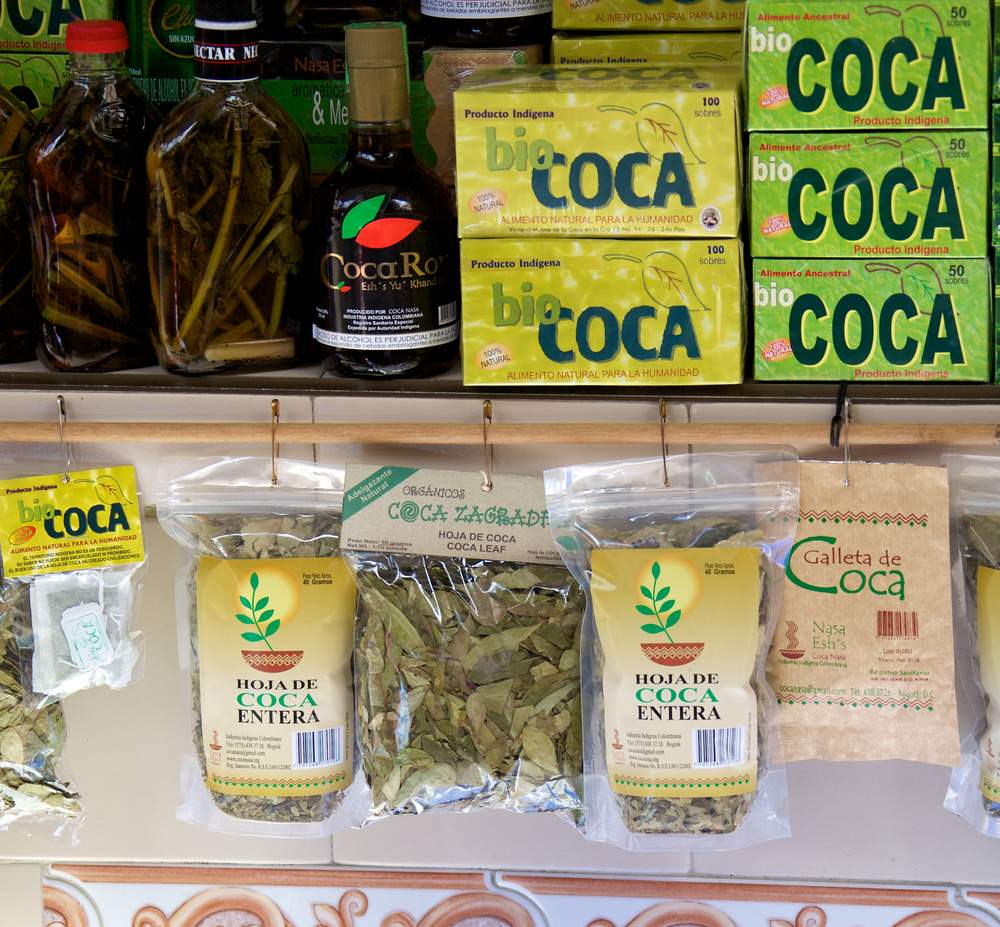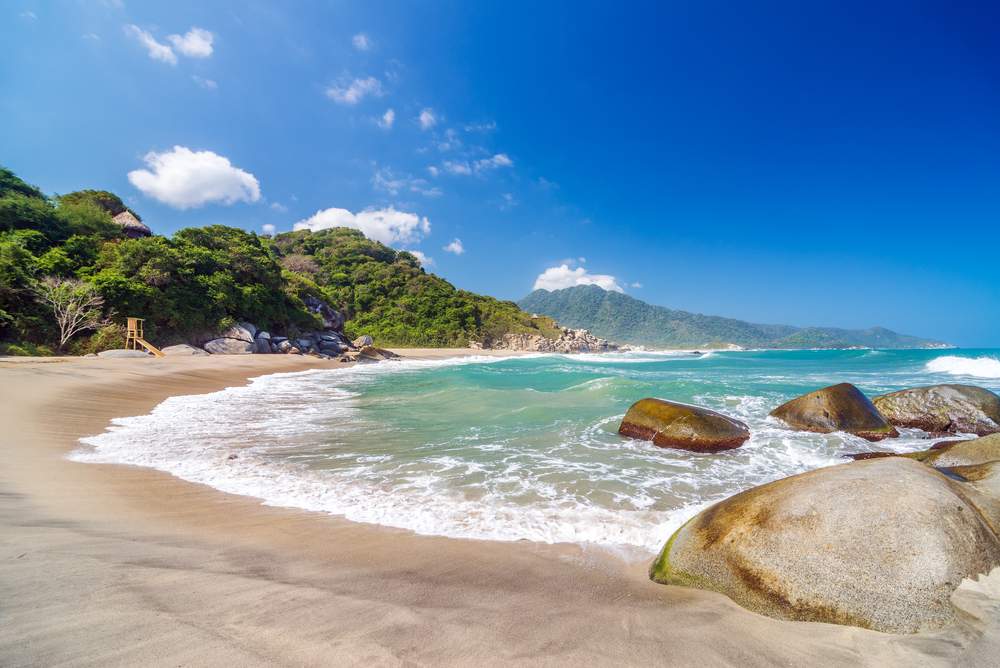So, when we decided to visit Colombia during our time in South America on our RTW trip, many family members and friends were up in arms. We’ve all watched the news. We’ve all read the reports. We know that Colombia is filled with nothing but drug-dealing, machete-wielding, machine-gun-carrying, kidnapping, violent people – right?
While I have to admit that I was apprehensive before our trip to Colombia, I am more than ecstatic that I listened to the people who had actually been there instead of the doom-and-gloom reports of the media. I can’t help but chuckle now at the absurdity of thinking that traveling in Colombia was going to be a bad idea.
So, check your preconceived notions at the door and forget everything you’ve heard about Colombia, because I’m here to break down the three biggest barriers that might prevent you from visiting this wonderful, awe-inspiring, beautiful country filled with some of the most delightful people I’ve ever met.
Misconception 1: Colombia is full of cocaine-addled drug addicts

The Colombian government has taken real steps over the last decade or so to slow cocaine production. And while people may still have the false perception that Colombian’s themselves are the one’s using the cocaine they produce, that distinction actually belongs to the United States. The majority of the cocaine produced in Colombia comes to America, constituting about 90%, according to PBS.
They went on to talk about how younger generations of Colombians are motivated by education. They are intent on shedding this unfair label their country has had since the 80s and 90s when Colombia was ruled by Pablo Escobar and the drug cartels. They want foreigners to come see that their country, and their population, is the complete opposite of what most perceive.
This conversation happened on our second night in Colombia. It was refreshing to interact with a group of young men and women who were so patriotic and passionate about correcting the misperceptions about their country. I was more than impressed, and even though I had spent less than 48 hours in Colombia up to that point, I had already noticed a remarkable degree of friendliness, kindness, and happiness amongst the Colombian people – none motivated by or in any way linked with the use of narcotics. The remainder of our month in Colombia only reinforced those first impressions.
Misconception 2: Colombia is dangerous. You will get robbed, kidnapped, shot, or possibly killed.

The Colombian people are embracing that change – they want change, and they are doing everything in their power to expedite it. At no point in our month in Colombia did we ever feel as though we were in any kind of danger. In fact, the local people went out of their way to steer tourists clear of any places that may be dangerous.
It all started when we got off the plane and started asking the usual questions: “Where’s an ATM?” “Where can we change money?” “Where’s the best place to get a cab?” We asked those questions more times than I can count over the course of our RTW trip. In other parts of South America, we got some icy responses and pointing, usually not very many smiles.
Now, I don’t want to paint the rest of South American countries as being unfriendly, because they weren’t – but it was just like at home, asking questions like these at airports and bus stations usually isn’t met with friendly enthusiasm. But in Colombia, everything was met with just that – enthusiasm, friendliness, and a huge smile.
After arriving at our hostel and finding out that there was a problem with the room we reserved, we moved. While we were initially frustrated, we quickly changed our tune as the woman working there worked so hard and fast to find us a new place, all the while apologizing over and over and even walking us to our new place. The people at the new hostel could not have been more helpful and friendly. One of the workers had a house in the beach town of Taganga, and when he found out we were planning to go there, he invited us to his place – not just to hang out, but to stay. Anything we needed, they helped with, and they always did it with a smile.
Colombians always seemed to be smiling. It was contagious. How could we not be happy in a place like this?
And it continued that way. Cab drivers, servers, bartenders, everyone who worked at our hostel, people we met in the streets, police officers, guards – literally everyone – was open and warm. It was almost surreal to see this kind of friendliness. Everyone was patient with our Spanish. Everyone was willing to help.
After learning more about Colombians and their culture, I think they’re just embracing the chance to be happy. After living through so much violence, after their country was torn apart over the last several decades by drug cartels and paramilitary groups, they’re rejoicing, happy to be alive and moving forward.
While sometimes as a tourist and traveler I’ve felt unwanted and like a burden to the local people, it was the complete opposite in Colombia. We were welcomed with open arms, and not just because we had money to spend. They were genuinely happy to see us visiting their country. And the pride that was so evident in that first group of college students was everywhere. Colombians love their country, and they want the rest of the world to feel the same.
Misconception 3: There’s not much to see in Colombia.

There are bustling metropolises like Bogota and Medellin that have everything large, urban cities in other countries have to offer, but without the attitude that usually comes with them. Tinto (sweet, black coffee) vendors are everywhere offering cups of coffee for pocket change. Beautiful, unique tourist attractions like the Gold Museum and Police Museum offer free admission and personalized tours by Colombian police officers, all with the goal of improving their English.
Then there’s Tayrona National Park, the most beautiful, serene, and empty tropical locale I’ve ever visited (Note: We were there in March during the shoulder season. I have heard that high season brings plenty of tourists). Sleep in a hammock on the beach, enjoy hiking through lush jungle from deserted beach to deserted beach, and take advantage of the solitude and lack of development that a place with this much beauty very rarely affords. Tayrona is a place where days can be wasted away just enjoying nature, swimming in crystal clear waters, lounging on what seems like your own personal beach, and watching a coconut slowly being taken out to sea and being brought back again.
Big cities and beach oases aren’t all that Colombia has on the menu, though. Here, you can also trek through the jungle like Indiana Jones to La Ciudad Perdida (the Lost City). Or spend time on a finca (coffee farm) lounging around the pool, sipping coffee, and touring the coffee plantations, all the while being treated as though you’re part of the family. Go salsa dancing in Cali, visit a cathedral carved out of a rock salt mine in Zipaquira, go rafting, kayaking, or paragliding in San Gil. Colombia really does have something for every type of traveler.
Colombia opened my eyes. As few as five years ago, I never would have thought to travel in a country like Colombia. It just wasn’t something that had ever occurred to me. But now I am fascinated by the way people from different cultures live their lives. I want to do away with that wall of stereotypes that I’ve built up over the years. I want to make my own conclusions about a country and its people.
While my own prejudices and barriers have been slowly crumbling and deteriorating the more places I go and the more people I meet, Colombia took a sledgehammer and knocked a huge hole in that wall of stereotypes and it’d do the same for you.
Ready to go? Read more about Colombia and South America:
- Bogota Indie Travel Guide
- Five Unexpected Treasures of South America
- How to Get Around Visa Fees in South America
- 10 Places in South America to Escape the Northern Winter
- Wine Tasting in South America: Where to Go and What to Try
- How to Spot Inaccurate Beliefs While Travelling: Perceptions aren’t always Truth
Photo Credits: Shutterstock.com, Jess Kraft /Shutterstock.com, Ivan_Sabo /Shutterstock.com, javarman /Shutterstock.com, Jess Kraft.